Team Report for Building Healthy Teams and Families
This article applies to leaders, coaches or advisors looking to work with teams or family groups.
Common Questions:
- How can I build a healthy team or family unit using the DNA Behavior Discovery Team Report?
- What items do I look for in the Team Report?
- What are common team or family group challenges, and how can I facilitate a team or family unit to address these challenges?
Solution Overview:
This article will review common challenges in a team or family unit and an approach to facilitating a team or family discussion/event/program using DNA Behavior Insights.
Overall Team or Family Unit Facilitation Approach:
Many teams and family units fail to understand the behavioral patterns underlying actions that occur within the team of family. The DNA Behavior system allows leaders, coaches, advisors and the team or family members involved to approach team or family performance and address common challenges:
- Understanding why different people naturally do things differently.
- Hiring the right talent to perform in the team or to serve the team or family.
- Managing each person uniquely and aligning them to a common goal.
- Identifying and unlocking the blockages to efficient execution and decision-making.
- Building open communication within the team or family and allowing creative conflict.
- Building higher levels of team or family unit engagement leads to sustained connectivity.
- Matching team, clients or customers and family members for improved service and retention
Team or Family Performance Model:
Start with recognizing the different talents to create greater understanding, acceptance, and respect through communication and commitment to building trust and alignment, resulting in overall team or family unit success.
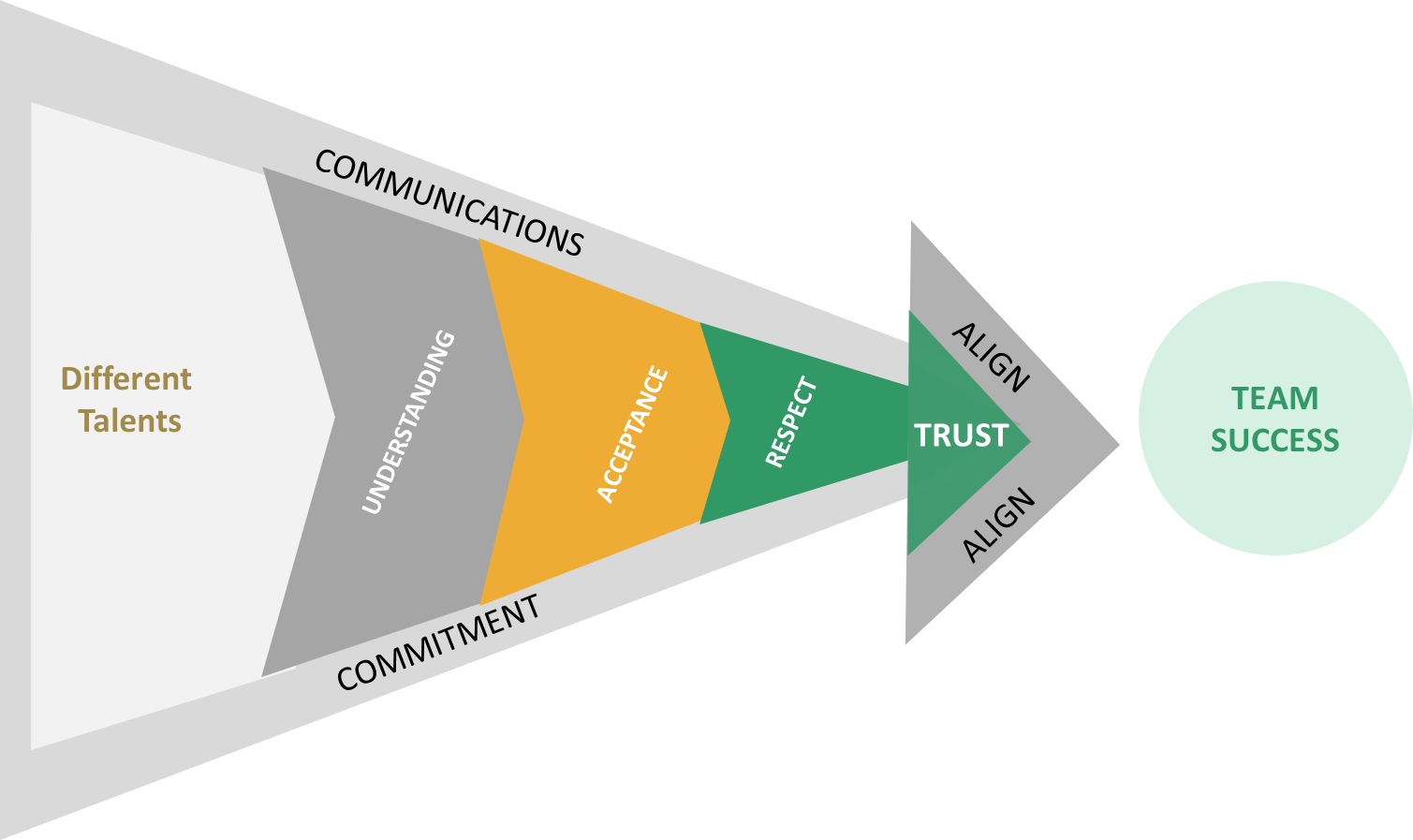
The different talents can be assets to the team or family unit if channeled in the right way, but they are also what create the friction if not fully understood and navigated.
Suggested steps for working with a team are set out below, and will generally be similar for working with a family unit:
- Leader review – for a leader to understand their natural leadership talents to build a healthy team and identify the team issues for increasing revenues and making key decisions.
- Team member review – for each team member to understand their natural talents for performing their role in the team.
- Team meeting – a team meeting to align the team for greater productivity to achieve team goals.
- Team relationships – each team member to learn how to adapt their communication to engage and interact with others in the team.
- Leader coaching – for the leader to lead from the front and coach each team member based on their unique talents.
- Team monitoring – quarterly team reviews to monitor team performance and health.
Facilitating a Team event:
- Set up the DNA Natural Behavior Discovery Process for each participant to complete and have them complete a Team Performance Score Card.
- The ideal team size is 8 to 10 people.
- Identify the team identity, purpose, mission and values – or this could be what needs to be determined or requires further clarification.
- Organize presentation slides and materials for each person: Individual Reports, Team Report, Unlocking Guide, and DNA Team Performance Plan.
- While the Team Report is central to the event, each team member should be ready and able to access their individual results from the DNA Web App.
- Meet the team leader before the session - brief, mentor, find a unique gift and purpose, prepare to become vulnerable, and identify team and business issues.
- Meet each team member before the session – identify unique gifts, purpose, roles, and issues, and prepare for the team event.
- Team event structure, including the design of:
- Ice-breakers
- Core Program – Using the DNA Team Performance Plan
- Optional segments – The 5 Dysfunctions, Leadership, Business Planning, Hiring, Succession, etc
- Meet with Team Leader – post session de-brief
The event design would be broadly similar for a family, except the issues addressed will be different depending on the family situation.
Getting Leadership Buy-in:
Generally, ask the following questions, along with questions about other specific issues you become aware of from discussions with the leader or other persons in the business:
- Allow 1 hour for this discussion, although you may need more time depending on the situation's complexity.
- Confirm the event start and end times to ensure you are on the same page and any other logistics such as location, dress, etc.
- These should have been worked out at least two weeks in advance with the event coordinator but ensuring that your thoughts are aligned is good.
- What are the goals for the organization, team, and individuals? What would you like to accomplish for the team event? Goals? Etc.
- What are your perceptions of business problems and key management issues? How does this relate to the Team Performance Score Card?
- What is your leadership style?
- What is each person's role in the team?
- Are there any serious problems with the team? This is pretty open-ended and allows them to reflect on the state of the team and individuals. Identify the differences within the team. [For instance, long-time personality clashes hindering teamwork should be discussed in the team meeting.]
- Is there anyone you are concerned about whether they will make it in their role or with the team?
- If you have any fundamental disconnects between the DNA Natural Behavior Style and your perception of the person, then this is a good time to ask.
- Ask the team leader if they want you to tell them about each person. So always have the one-page combined graphs in front of you to talk to them as needed. They are usually very surprised at how much we can know about people we have not met.
Building a Healthy Team by Understanding Differences:
- The path to a healthy team begins with an awareness of how each of us is different.
- Communicating with each member on their terms.
- Is grounded in honest appraisal and feedback.
- Requires trust between team members and the leadership.
- For Team Programs, use the Team Performance Plan booklet.
You will also gain benefit by reading the book Leadership Behavior DNA by Lee Ellis and Hugh Massie.
Reviewing the Team Report for a Team or Family Unit:
- Identify the name of the Team to be reviewed and the team members to be included in the Team Report. Ideally, the team should be 8 to 10 people.
- Identify the overall top two talents of the team as a whole on a blended basis, and review whether this fits with the team purpose and function.
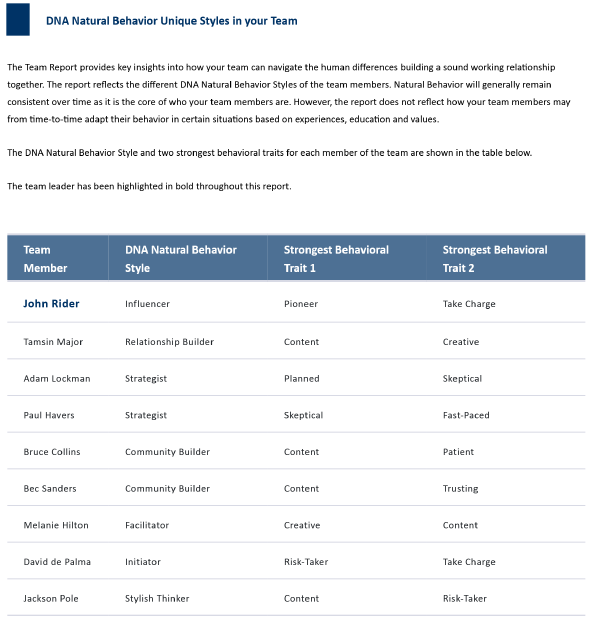
- Identify the leader, their role in the team and their unique style and top two talents as measured by the 8 primary factors.
- Then review the unique style and top two talents of each team member.
- Review the results and relationships balance of the team and how that aligns to the mission of the team.
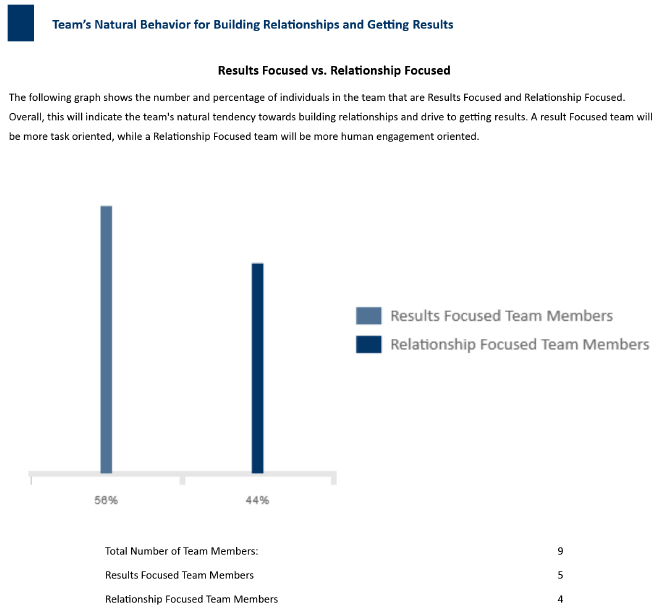
- Identify the distribution of the DNA Natural Behavior Styles of the team.
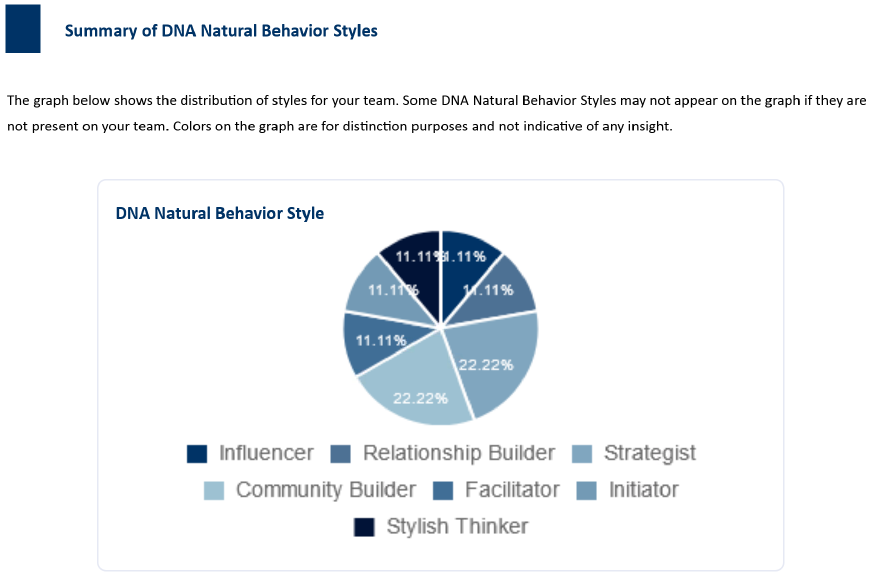
- Identify the team roles, talents of the team members, the differences between the talents of the team members as measured by the 8 primary factors, talent gaps and the implications of the talent gaps.
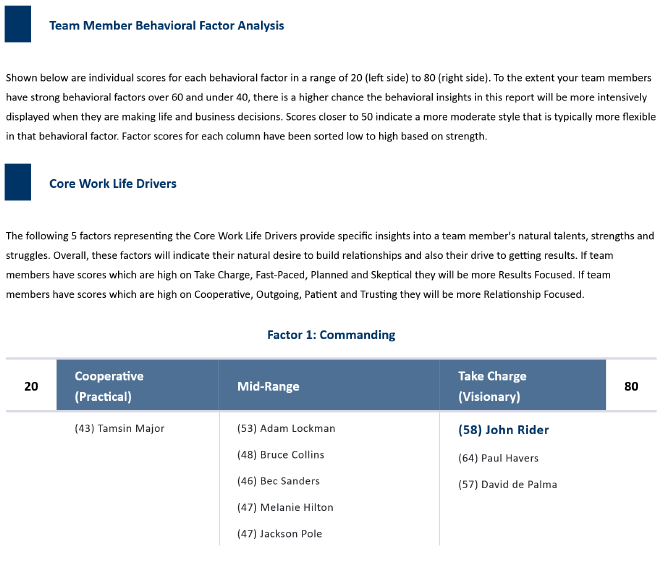
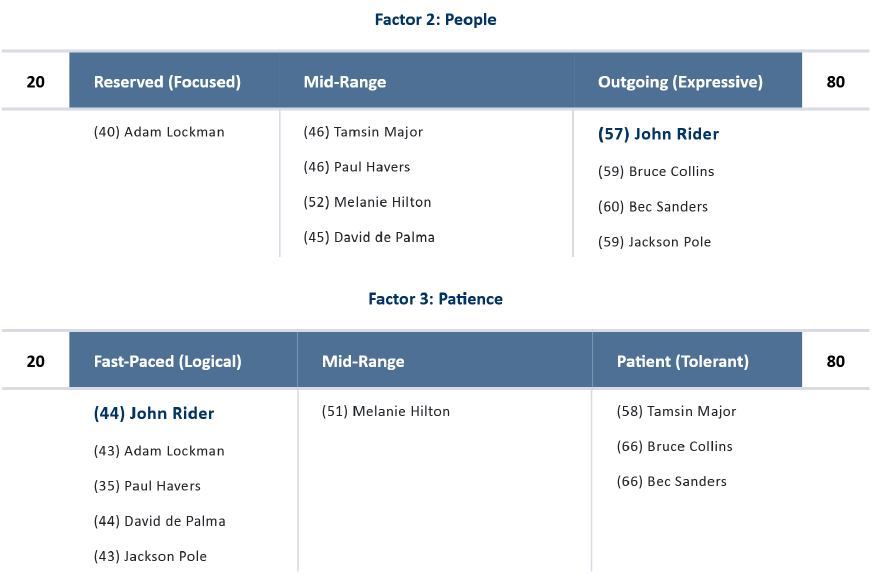
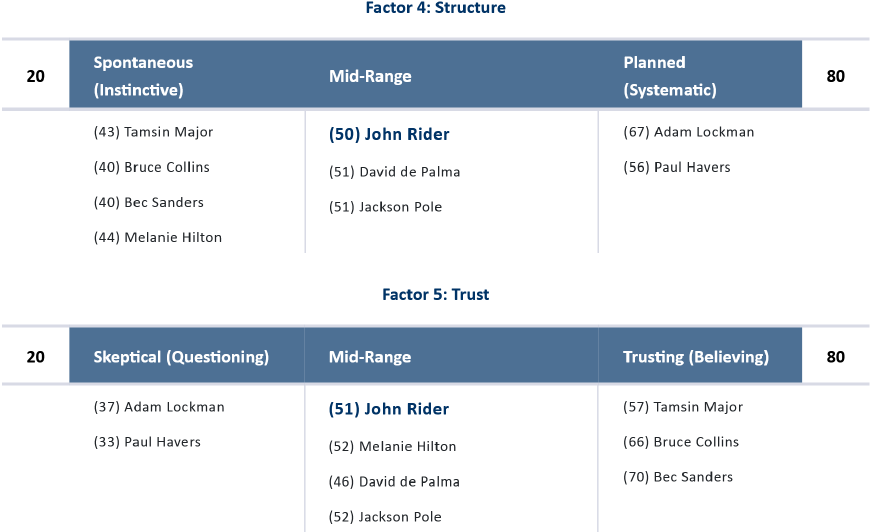
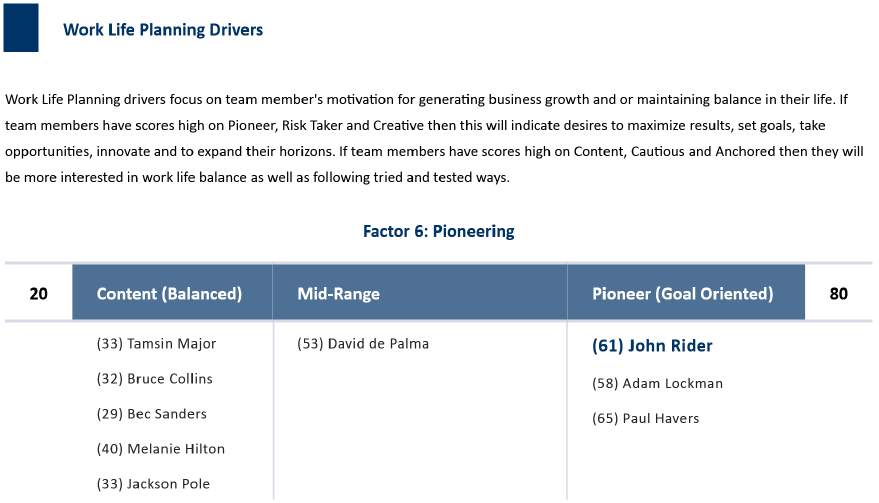
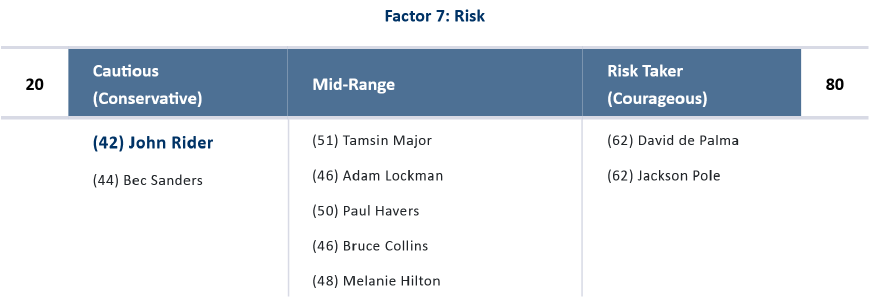
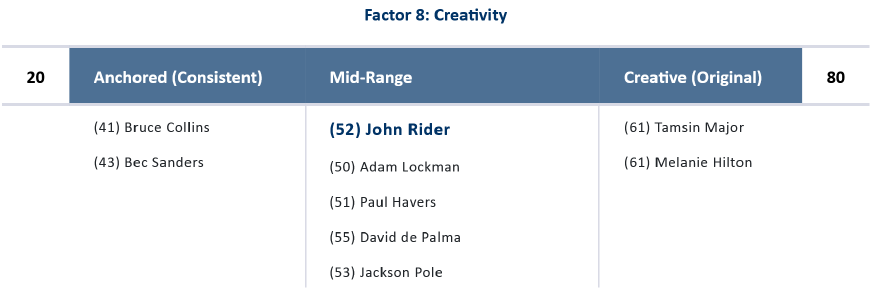
- Identify team growth, stability and adaptability issues.
- Identify potential behavioral blockages to success and what changes need to occur to unblock them.
- Identify what talent gaps need to be filled.
- Identify what other changes may be needed for the team to succeed.
- Have the team members identify their individual strengths and struggles.
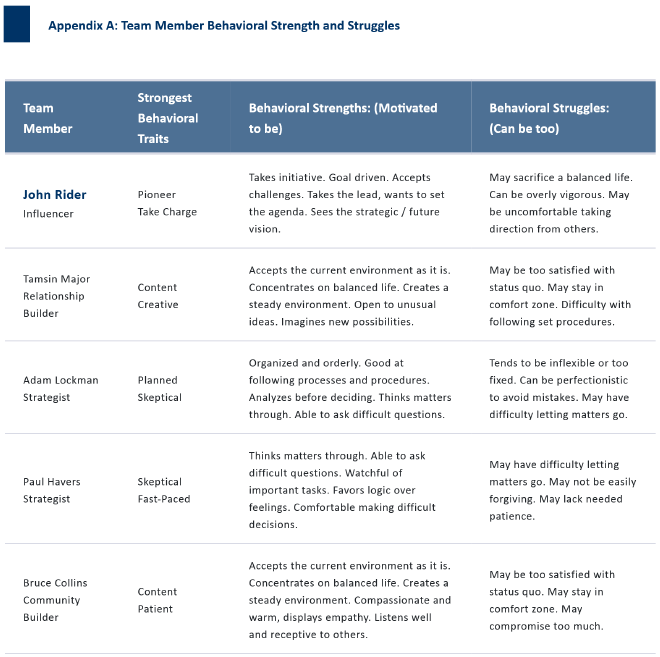
- Have the team members identify their communication keys.
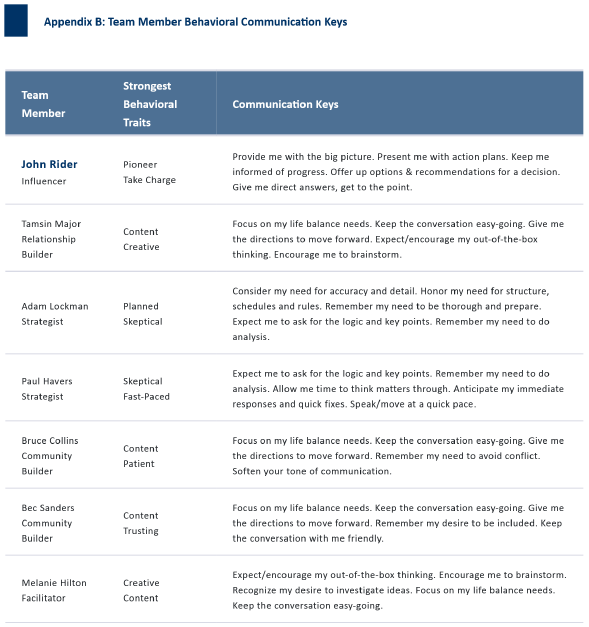
Related Articles:
![DNA-B-Primary_White (7).png]](https://kb.dnabehavior.com/hs-fs/hubfs/DNA-B-Primary_White%20(7).png?height=50&name=DNA-B-Primary_White%20(7).png)